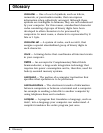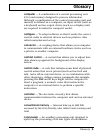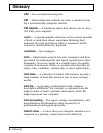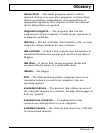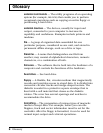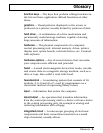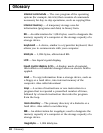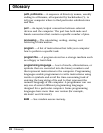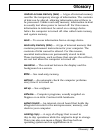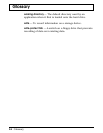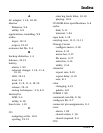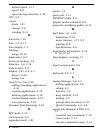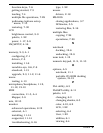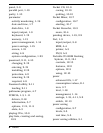
path, pathname — A sequence of directory names, usually
ending in a filename, all separated by backslashes (\), to
tell your computer where to find particular subdirectories
and files.
port — An input/output connection between external
devices and the computer. The port has both male and
female connectors that contain a specific number of pins.
processing — The calculating, sorting, storing, and
retrieving of information.
program — A list of instructions that tells your computer
how to perform a specific task.
program file — A program stored on a storage medium such
as a floppy or hard disk.
programming language — A set of words, abbreviations, or
symbols that are converted into the binary numbers and
that represent instructions to the computer. Programming
languages enable programmers to write instructions using
words or symbols and avoid the time-consuming task of
entering the long string of 0s and 1s that represent the
numeric language of the computer. A programmer can use
any one of several different programming languages
designed for a particular computer. Some programming
languages have more than one version (for example,
MS-BASIC and GW-BASIC).
RAM — See random access memory.
Glossary
12 Glossary



